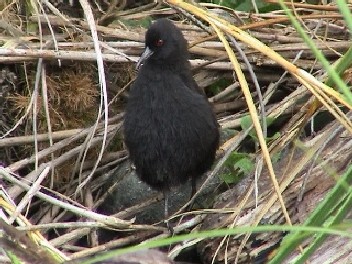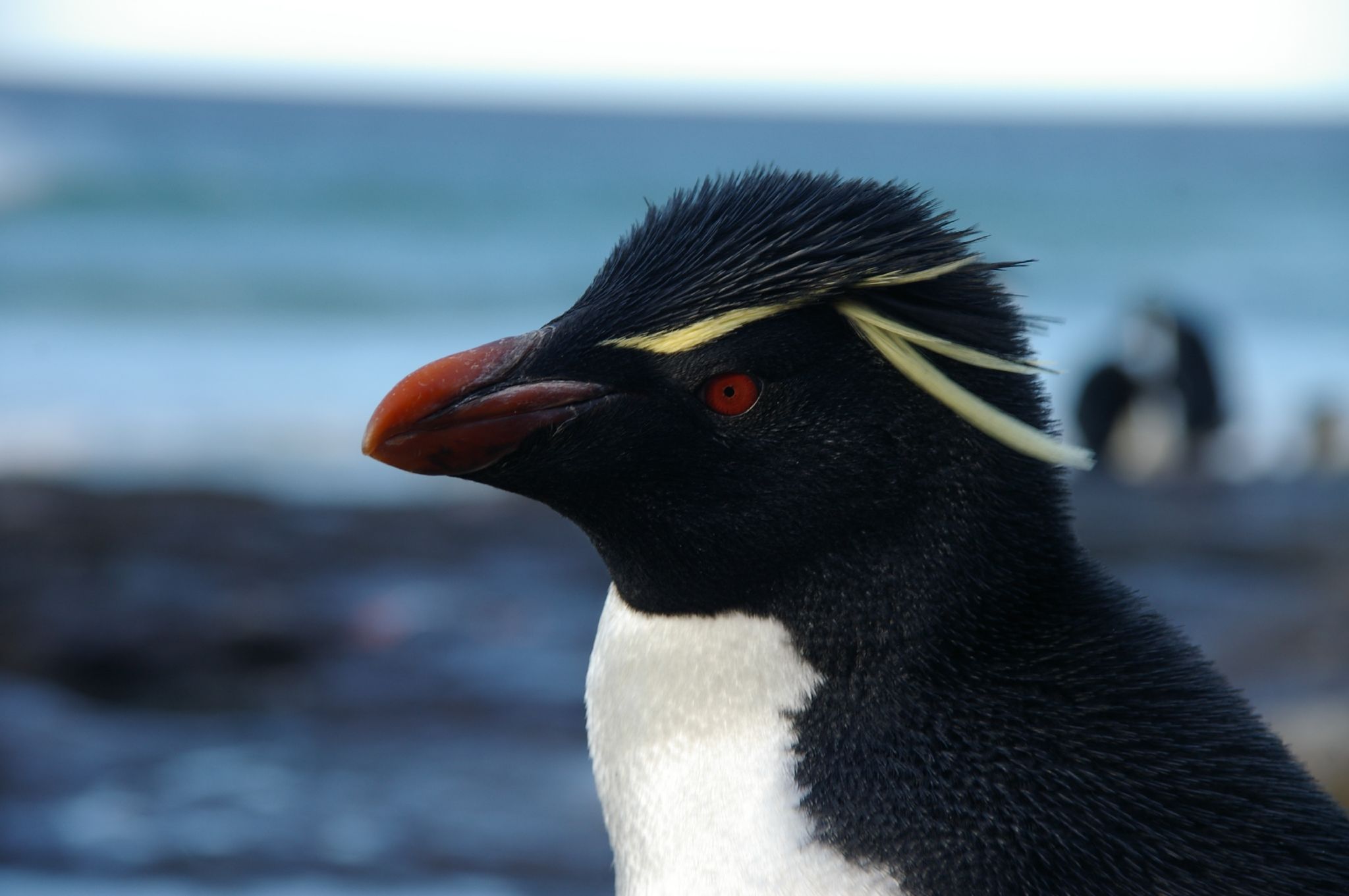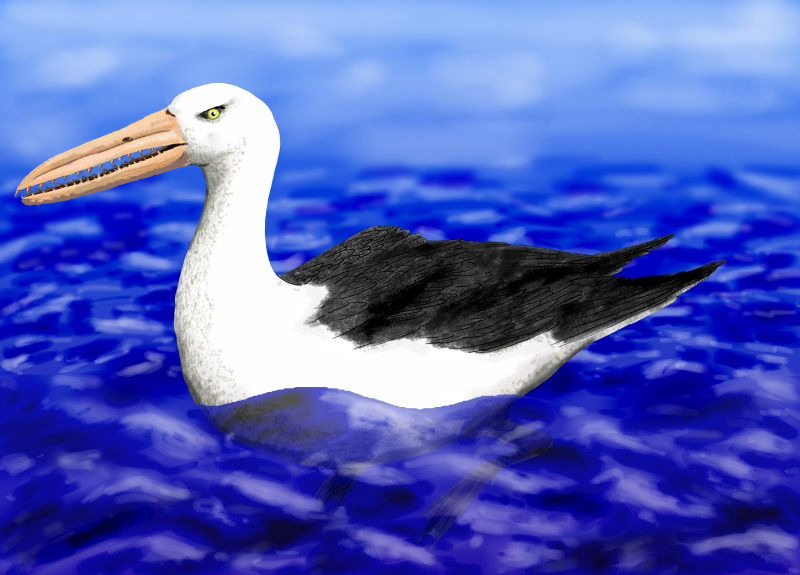|
Flightless
Flightless birds are birds that cannot fly, as they have, through evolution, lost the ability to. There are over 60 extant species, including the well-known ratites ( ostriches, emus, cassowaries, rheas, and kiwis) and penguins. The smallest flightless bird is the Inaccessible Island rail (length 12.5 cm, weight 34.7 g). The largest (both heaviest and tallest) flightless bird, which is also the largest living bird in general, is the common ostrich (2.7 m, 156 kg). Many domesticated birds, such as the domestic chicken and domestic duck, have lost the ability to fly for extended periods, although their ancestral species, the red junglefowl and mallard, respectively, are capable of extended flight. A few particularly bred birds, such as the Broad Breasted White turkey, have become totally flightless as a result of selective breeding; the birds were bred to grow massive breast meat that weighs too much for the bird's wings to support in flight. Flightlessness ... [...More Info...] [...Related Items...] OR: [Wikipedia] [Google] [Baidu] |
Ratites
Ratites () are a polyphyletic group consisting of all birds within the infraclass Palaeognathae that lack keel (bird anatomy), keels and flightless bird, cannot fly. They are mostly large, long-necked, and long-legged, the exception being the Kiwi (bird), kiwi, which is also the only nocturnal extant ratite. The understanding of relationships within the paleognath clade has been in flux. Previously, all the flightless members had been assigned to the order Struthioniformes, which is more recently regarded as containing only the ostrich. The modern bird superorder Palaeognathae consists of ratites and the Flying and gliding animals, flighted Neotropic tinamous (compare to Neognathae). Unlike other flightless birds, the ratites have no keel (bird), keel on their sternum—hence the name, from the Latin ('raft', a vessel which has no keel—in contradistinction to extant flighted birds with a keel). Without this to anchor their wing muscles, they could not have flown even if they ha ... [...More Info...] [...Related Items...] OR: [Wikipedia] [Google] [Baidu] |
Inaccessible Island Rail
The Inaccessible Island rail, or Inaccessible rail (''Laterallus rogersi'') is a small bird species of the rail family, Rallidae. Endemic to Inaccessible Island in the Tristan Archipelago in the isolated south Atlantic, it is the smallest extant flightless bird in the world. The species was formally described by physician Percy Lowe in 1923 but had first come to the attention of scientists 50 years earlier. The Inaccessible Island rail's taxonomic affinities and origin were a long-standing mystery; in 2018 its closest relative was identified as the South American dot-winged crake, and it was decided that both species are best classified in the genus '' Laterallus''. The Inaccessible Island rail has brown plumage, black bill and feet, and adults have a red eye. It occupies most habitats on Inaccessible Island, from the beaches to the central plateau, feeding on a variety of small invertebrates and also some plant matter. Pairs are territorial and monogamous, with both paren ... [...More Info...] [...Related Items...] OR: [Wikipedia] [Google] [Baidu] |
Origin Of Birds
The scientific question of which larger group of animals birds evolved within has traditionally been called the "origin of birds". The present scientific consensus is that birds are a group of maniraptoran theropod dinosaurs that originated during the Mesozoic era. A close relationship between birds and dinosaurs was first proposed in the nineteenth century after the discovery of the primitive bird '' Archaeopteryx'' in Germany. Birds and extinct non-avian dinosaurs share many unique skeletal traits. Moreover, fossils of more than thirty species of non-avian dinosaur with preserved feathers have been collected. There are even very small dinosaurs, such as ''Microraptor'' and ''Anchiornis'', which have long, vaned arm and leg feathers forming wings. The Jurassic basal avialan '' Pedopenna'' also shows these long foot feathers. Paleontologist Lawrence Witmer concluded in 2009 that this evidence is sufficient to demonstrate that avian evolution went through a four-winged stage. ... [...More Info...] [...Related Items...] OR: [Wikipedia] [Google] [Baidu] |
Terror Birds
Phorusrhacids, colloquially known as terror birds, are an extinct family of large carnivorous, mostly flightless birds that were among the largest apex predators in South America during the Cenozoic era. Their definitive fossil records range from the Middle Eocene to the Late Pleistocene around , though some specimens suggest that they were present since the Early Eocene. They ranged in height from . One of the largest specimens from the Early Pleistocene of Uruguay, possibly belonging to '' Devincenzia'', would have weighed up to . Their closest modern-day relatives are believed to be the seriemas. '' Titanis walleri'', one of the larger species, is known from Texas and Florida in North America. This makes the phorusrhacids the only known large South American predator to migrate north in the Great American Interchange that followed the formation of the Isthmus of Panama land bridge (the main pulse of the interchange began about 2.6 Ma ago; ''Titanis'' at 5 Ma was an early northwa ... [...More Info...] [...Related Items...] OR: [Wikipedia] [Google] [Baidu] |
Cassowary
Cassowaries (; Biak: ''man suar'' ; ; Papuan: ''kasu weri'' ) are flightless birds of the genus ''Casuarius'', in the order Casuariiformes. They are classified as ratites, flightless birds without a keel on their sternum bones. Cassowaries are native to the tropical forests of New Guinea (Western New Guinea and Papua New Guinea), the Moluccas (Seram and Aru Islands), and northeastern Australia.. Three cassowary species are extant. The most common, the southern cassowary, is the third-tallest and second-heaviest living bird, smaller only than the ostrich and emu. The other two species are the northern cassowary and the dwarf cassowary; the northern cassowary is the most recently discovered and the most threatened. A fourth, extinct, species is the pygmy cassowary. Cassowaries are very wary of humans, but if provoked, they are capable of inflicting serious, even fatal, injuries. They are known to attack both dogs and people. The cassowary has often been labelled "the wor ... [...More Info...] [...Related Items...] OR: [Wikipedia] [Google] [Baidu] |
Phorusrhacidae
Phorusrhacids, colloquially known as terror birds, are an extinct family of large carnivorous, mostly flightless birds that were among the largest apex predators in South America during the Cenozoic era. Their definitive fossil records range from the Middle Eocene to the Late Pleistocene around , though some specimens suggest that they were present since the Early Eocene. They ranged in height from . One of the largest specimens from the Early Pleistocene of Uruguay, possibly belonging to '' Devincenzia'', would have weighed up to . Their closest modern-day relatives are believed to be the seriemas. '' Titanis walleri'', one of the larger species, is known from Texas and Florida in North America. This makes the phorusrhacids the only known large South American predator to migrate north in the Great American Interchange that followed the formation of the Isthmus of Panama land bridge (the main pulse of the interchange began about 2.6 Ma ago; ''Titanis'' at 5 Ma was an early northwa ... [...More Info...] [...Related Items...] OR: [Wikipedia] [Google] [Baidu] |
Birds
Birds are a group of warm-blooded vertebrates constituting the class (biology), class Aves (), characterised by feathers, toothless beaked jaws, the Oviparity, laying of Eggshell, hard-shelled eggs, a high Metabolism, metabolic rate, a four-chambered heart, and a strong yet lightweight Bird skeleton, skeleton. Birds live worldwide and range in size from the bee hummingbird to the common ostrich. There are over 11,000 living species and they are split into 44 Order (biology), orders. More than half are passerine or "perching" birds. Birds have Bird wing, wings whose development varies according to species; the only known groups without wings are the extinct moa and elephant birds. Wings, which are modified forelimbs, gave birds the ability to fly, although further evolution has led to the Flightless bird, loss of flight in some birds, including ratites, penguins, and diverse endemism, endemic island species. The digestive and respiratory systems of birds are also uniquely a ... [...More Info...] [...Related Items...] OR: [Wikipedia] [Google] [Baidu] |
Geranoididae
Geranoididae is a clade of extinct birds from the early to late Eocene and possibly early Oligocene of North America and Europe. These were mid-sized, long-legged flightless birds.Gerald Mayr (2009). Paleogene Fossil Birds Recent research shows that these birds may actually be palaeognaths related to ostriches. Classification It is rather unambiguous that geranoidids are either part of or stem representatives of Gruoidea, the clade that includes modern cranes, limpkins and trumpeters, though their precise relationship varies among studies, some recovering them as sister taxa to another clade of flightless ratite-like birds, the eogruiids. The most recent consensus appears to be that geranoidids are outside of Gruoidea, with eogruiids being more closely related to modern cranes. However, Mayr (2019) argued that close affinities between Geranoididae and the palaeognathous family Palaeotididae are at least as well supported as the classification of geranoidids into the Gruifor ... [...More Info...] [...Related Items...] OR: [Wikipedia] [Google] [Baidu] |
Penguins Edinburgh Zoo 2004 SMC
Penguins are a group of Water bird, aquatic flightless birds from the family (biology), family Spheniscidae () of the order (biology), order Sphenisciformes (). They live almost exclusively in the Southern Hemisphere. Only one species, the Galápagos penguin, is equatorial, with a small portion of its population extending slightly north of the equator (within a quarter degree of latitude). Highly adapted for life in the ocean water, penguins have Countershading, countershaded dark and white plumage and flippers for swimming. Most penguins feed on krill, fish, squid and other forms of sea life which they catch with their bills and swallow whole while swimming. A penguin has a spiny tongue and powerful jaws to grip slippery prey. They spend about half of their lives on land and the other half in the sea. The largest living species is the emperor penguin (''Aptenodytes forsteri''): on average, adults are about tall and weigh . The smallest penguin species is the Little penguin, ... [...More Info...] [...Related Items...] OR: [Wikipedia] [Google] [Baidu] |
Penguin
Penguins are a group of aquatic flightless birds from the family Spheniscidae () of the order Sphenisciformes (). They live almost exclusively in the Southern Hemisphere. Only one species, the Galápagos penguin, is equatorial, with a small portion of its population extending slightly north of the equator (within a quarter degree of latitude). Highly adapted for life in the ocean water, penguins have countershaded dark and white plumage and flippers for swimming. Most penguins feed on krill, fish, squid and other forms of sea life which they catch with their bills and swallow whole while swimming. A penguin has a spiny tongue and powerful jaws to grip slippery prey. They spend about half of their lives on land and the other half in the sea. The largest living species is the emperor penguin (''Aptenodytes forsteri''): on average, adults are about tall and weigh . The smallest penguin species is the little blue penguin (''Eudyptula minor''), also known as the fairy pen ... [...More Info...] [...Related Items...] OR: [Wikipedia] [Google] [Baidu] |
Dromornithidae
Dromornithidae, known as mihirungs (after Tjapwuring ''Mihirung paringmal'', "giant bird") and informally as thunder birds or demon ducks, were a clade of large, flightless Australian birds of the Oligocene through Pleistocene epochs. All are now extinct. They were long classified in Struthioniformes (the ratites), but are now usually classified as galloanseres. Dromornithids were part of the Australian megafauna. One species, '' Dromornis stirtoni'', was tall. Only a single species, ''Genyornis newtoni'' survived into the Late Pleistocene. They are thought to have been herbivorous.McInerney, P. L.; Blokland, J. C.; Worthy, T. H. (2024). "Skull morphology of the enigmatic Genyornis newtoni Stirling and Zeitz, 1896 (Aves, Dromornithidae), with implications for functional morphology, ecology, and evolution in the context of Galloanserae". Historical Biology: An International Journal of Paleobiology. 36 (6): 1093–1165. doi:10.1080/08912963.2024.2308212. Classification The scient ... [...More Info...] [...Related Items...] OR: [Wikipedia] [Google] [Baidu] |
Common Ostrich
The common ostrich (''Struthio camelus''), or simply ostrich, is a species of flightless bird native to certain areas of Africa. It is one of two extant species of ostriches, the only living members of the genus ''Struthio'' in the ratite group of birds. The other is the Somali ostrich (''Struthio molybdophanes''), which has been recognized as a distinct species by BirdLife International since 2014, having been previously considered a distinctive subspecies of ostrich. The common ostrich belongs to the order (biology), order Struthioniformes. Struthioniformes previously contained all the ratites, such as the Kiwi (bird), kiwis, emus, Rhea (bird), rheas, and Cassowary, cassowaries. However, recent genetic analysis has found that the group is not monophyletic, as it is paraphyletic with respect to the tinamous, so the ostriches are now classified as the only members of the order. Phylogenetic studies have shown that it is the sister group to all other members of Palaeognathae, and ... [...More Info...] [...Related Items...] OR: [Wikipedia] [Google] [Baidu] |









